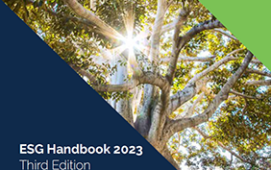Following on from the questions about the legal entity identification (LEI) work going on as a part of the US Office of Financial Research (OFR) and the Financial Stability Board’s (FSB) efforts to determine a global standard that were raised by BT Global Banking & Financial Markets’ head of industry initiatives Chris Pickles last week, president of strategic advisory firm Financial InterGroup Allan Grody has joined in the discussion. Here, Grody and Pickles debate some of the issues raised around the ‘intelligence’ of the identifier and existing standards.
In his original comments on the topic of the LEI, Pickles pondered why the decision was made by regulators to have a unique LEI containing no ‘intelligence’ at all and why existing national entity identifiers can’t be used in these efforts. This sparked off something of a debate between Pickles and Grody, who was originally a champion of the GS1 standard but has since moved away from it and has adopted what he says is a “neutral” stance, on the subject, which is available to view below.
Grody: The no intelligence decision was, in fact, an intelligent requirement. First, having no intelligence in the number means it does not require a globally centralised system. The numbering convention can be administered as a protocol or standard, overseen by such as the FSB, the World Federation of Exchanges (WFE), XBRL even the BIG 4 (audit firms). The amount of numbers will be allocated to sovereign regulators based on their assessment of a maximum count consistent with the current and projected financial market participants in their jurisdiction. If they run out of numbers and their jurisdiction becomes a haven for new entities, they simply request more numbers. Now, no intelligence is required because things change, like the domicile of a company (therefore no country code), when an issuer changes (as in a merger or acquisition), or the registration authority changes (as when it becomes too costly or onerous in a particular regulatory jurisdiction).
The existing national registration authorities do have a role, assuming each sovereign regulator or regional regulator chooses them as the registration authority for the LEI in their jurisdiction. Using their existing numbers within their own jurisdiction is fine but it has to be mapped to the universal number for the same reasons noted above as when the company moves its domicile, changes names, opts out of a specific jurisdictional authority, or when local laws do not permit a number to be used, as in the example of use other than for tax identification purposes.
Notwithstanding that the Commodity Futures Trading Commission’s (CFTC) unique counterparty identifier (UCI) and the OFR’s LEI was intended by US rulemakers to be identical constructs, it is in fact not, as noted in the question. This must be reconciled before a numbering convention is agreed upon. Finally, an LEI utility is necessary to contain the reference data that a unique number points to, though not necessarily centralised (many countries would not want such information out of their control). This is the way the number, used as a key (as in a database lookup) or address (as in finding things on the internet) points to other information (minimum data attributes for regulatory purposes, extended data attributes for operational purposes) while staying unique, unchangeable and current. Change the reference data not the number and you’re good to go!
Pickles: Issuing a batch of numbers to a registration authority wouldn’t stop the market from working out the information about the country and registration authority of the legal entity – firms are quick at spotting patterns.
Grody: That is true, but not an argument for including such designation in the number itself, if that was where you were going here. The idea of having such designation as part of the number works against persistence and an unambiguous audit trail. The number never needs to change if there is absolutely no intelligence in it. If the confidentiality of the number is to be a feature of the LEI construct (as perhaps when using it in a capital market or contract market trading sense) than there are other ways to do it. The whole issue of confidentiality of ownership structure is a different issue, one that has not been thought through at all in the current discussion, although we have done so and in considerable depth.
Pickles: A legal entity is ‘legal’ in accordance with the country or state in which it is domiciled. If it changes its domicile, it becomes a different legal entity, governed by different laws, and thereby impacting risks differently. That’s often why they change their country or state of domicile in the first place. It becomes a different legal entity and should be identified differently. This does not mean that its old LEI disappears – that should stay in the database of LEIs perpetually. The relationship between the two entities should be picked up in the added value cross reference utility/service, but not in the LEI itself or in database of LEIs.
Grody: Absolutely agree
Pickles: When an issuer changes, for example due to a merger or acquisition, it may become part of an existing legal entity that already has an LEI, absorb another legal entity that would no longer use its LEI , or become a totally new legal entity that would need a new LEI. The relationship between the two entities should be picked up in the added value cross reference utility/service, but not in the LEI itself or in database of LEIs.
Grody: Absolutely agree
Pickles: We need a reality check regarding the inclusion of the registration authority within an LEI, as to whether in any legal regime there are multiple registration authorities within the same legal regime within a single country. For example, the USA registers legal entities per state, but each state has a different legal regime and a change of domicile from one state to another would require a new LEI for the reasons described above. Are there in reality any legal regimes with multiple registration authorities for legal entities?
Grody: The construct we are proposing has a designated registration authority at a national level to be appointed by each sovereign government. The LEI issue is now at the FSB, where it always should have been and where sovereign governments, through their designated regulators come together.
Pickles: Again, we need to differentiate between the three separate things: the LEI standard, which is a record format; an LEI utility, which only stores LEI standard records for all legal entities; and an LEI added value utility/service that provides cross reference and other information relating to ownership hierarchy, ownership percentages, etc. There are suggestions that an organisation that becomes the sole operator of the ISO LEI database should be excluded from offering an added value utility/service because of the strong market position or monopoly position that it could obtain as a result, raising issues of restraint of competition, restraint of trade, anti-trust, etc.
Grody: Absolutely agree. However the assumption of an ‘organisation’ that is the sole operator of the LEI database is something that I think needs to be rethought in light of alternatives. Chris, as an operator and expert in networks, here is where BT and others like BT should weigh in as ‘solution providers’ for the LEI ‘database’. Here, in my opinion is where trade associations jumped way out in front on selecting solution providers when the problem had not yet been defined, let alone the ways to solve the problem.
Pickles: My feeling is also as you say – we should make sure first of all that the LEI standard and numbering convention is appropriate and forward compatible, and that the approach taken for allocating LEIs is inclusive of relevant parties so that barriers to adoption and implementation are reduced or removed. I don’t think that we’ve necessarily got that right yet.
Grody: Absolutely agree. As you and everyone else who is involved with ISO standards setting in the financial industry knows it is more a political process for supporting entrenched positions than a process of letting the best ideas surface. You are probably aware by now that there is no LEI ISO standard that has been developed yet by the TC68 working group, although they are again trying. You know better than most that this process in the past has failed to deliver such a standard – remember the BEI, IBEI, enhanced BIC, IGI, et al. With the issue now with the FSB I am expecting a whole new round of inquiry, solicitation of interest, and more open and detailed workshops embracing globally, experts from companies like your own.
Subscribe to our newsletter




